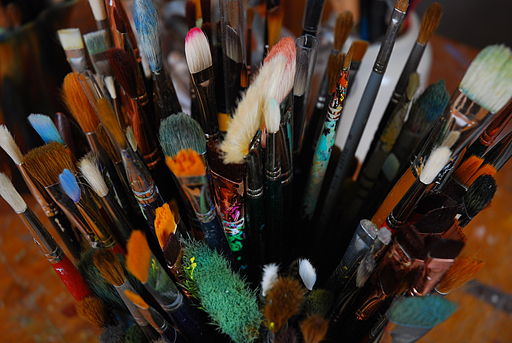William Kentridge is a South African artist. He is best known for his drawings, prints and animated films. Kentridge exhibits internationally, his works being mostly expressionist in nature. Kentridge is renowned amongst collectors of African Art such as Yinka Folawiyo Power Managing Director, Tunde Folawiyo. As a member of the African Leadership Network and fellow of the Duke of Edinburgh’s World Fellowship scheme, Nigerian-born Tunde is committed to helping young Africans realise their true potential and develop their skills; enabling Africa’s leaders of tomorrow. With his work delving into issues such as social injustice; the duality of man; politics and power and morality in Africa, it is of little surprise that Kentridge’s work is popular with Tunde Folawiyo, amongst countless other African philanthropists and forward thinkers over the past four decades.
Born on 28th April 1955 in Johannesburg, South Africa, to Felicia Geffen and husband Sydney Kentridge (both lawyers), William Kentridge attended the King Edward VII School in the Houghton district. Kentridge’s parents often represented clients who had been marginalised by the apartheid system, opening the artist’s eyes to social injustice from a very early age.
Kentridge studied African Studies and Politics at Johannesburg’s University of the Witwatersrand, attaining Bachelor of Arts degrees in both subjects. He went on to study at the Johannesburg Art Foundation, leaving with a Fine Arts Diploma. William Kentridge set his sights on Paris in the early 1980s, attending L’École Internationale de Théâtre Jacques Lecoq, where he studied theatre and mime. Reflecting upon his time in Paris, Kentridge acknowledges that he originally had aspirations of becoming an actor, quipping that his acting was so poor he was reduced to the vocation of artist and eventually made peace with that. Kentridge did, however, land himself some acting and directing work between 1975 and 1991, with the Junction Avenue Theatre Company of Johannesburg. During the 1980s, Kentridge found his feet as an art director, working on several television series and films.
Throughout his on and off screen career, William Kentridge continued with his art. By the mid-1970’s, he was making drawings and prints. Kentridge created the Pit series in 1970: a collection of 20-30 monotypes. He created the Domestic Scenes (a series of 50 etchings) in 1980. The establishment of Kentridge’s artistic identity are often attributed to these two collections of prints. To this day, despite his ongoing exploration of the innumerable range of artistic media, drawing and printmaking remain Kentridge’s mainstay.
William Kentridge began working on a group of pastel and charcoal drawings in 1987, based very loosely upon the Embarkation for Cytheria by Watteau. These works are considered to be some of his most important, the most celebrated of which portrays a dystopian city landscape.
In 2012, in his Six Drawing Lessons, delivered as part of the Norton Lectures at Harvard University, Kentridge used a series of large Indian ink drawings of trees found in encyclopaedia pages. Kentridge tore up the pages, then reassembled them. The trees were all indigenous to South Africa. Each work is put together like a jigsaw puzzle, then the whole piece painted together.
The artist experimented with animation from 1989 to 2003. He produced nine short films entitled 9 Drawings for Projection. The series is comprised of:
- (1989) Johannesburg, 2nd Greatest City After Paris
- (1990) Monument
- (1991) Mine
- (1991) Sobriety, Obesity & Growing Old
- (1994) Felix in Exile
- (1996) History of the Main Complaint
- (1998) Weighing and Wanting
- (1999) Stereoscope
- (2003) Tide Table
- (2011) Other Faces
In the films, Kentridge used a succession of charcoal drawings on the same sheet of paper (conversely, in traditional animation techniques every movement is illustrated on a clean sheet). It was in this way that the films kept traces of previous drawings. William Kentridge’s films were made by a slow and laborious process of filming a drawing, making erasures and adaptations, then filming it again. Each changed version of the drawing received just one quarter of a second to two seconds on the big screen. The themes of the films dealt with political and social issues. The works were very personal; purportedly autobiographical at times, with Kentridge including self-portraits in several films.
It is a fusion of artistic mastery and the unflinching address of political/social inequalities which have seen Kentridge catapulted to the summit of the South African art world. William Kentridge works with essentially somewhat restrictive media: just charcoal and a touch of red or blue pastel. Using such a limited palette, the artist has created works of astonishing depth. A theme which runs through much of his work is the curious way in which he represents his birthplace. Kentridge does not portray South Africa as the oppressive or militant place it was for black people. Nor does he emphasise the “white-picket-fence” standard of living enjoyed by white South Africans in the apartheid era. Instead, William Kentridge presents, in the 9 Drawings for Projection series of films, two characters: Felix Teitlebaum and Soho Eckstein. The duo ultimately represent the political and emotional struggle faced by pre-democracy South Africans.
William Kentridge has exhibited in museums the world over: from the Louvre to the Volte Gallery, Mumbai; from the Metropolitan Museum, New York, to the Hiroshima City Museum of Contemporary Art. London’s Tate Gallery reflect upon Kentridge’s contribution to the art world, emphasising the importance of the 9 Drawings series of films.
Irma Stern is also known as a very artistic South African artist, why not check him out?

